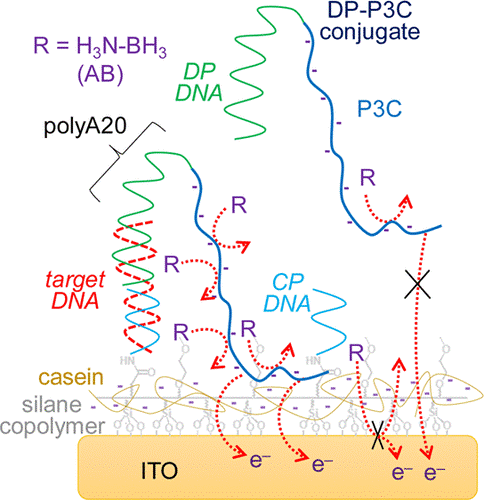
Ji-Eun Jeong (박사과정)
Direct electron transfer between a redox label and an electrode
requires a very short working distance (<1-2 nm),
and in general an affinity biosensor based on the
direct electron transfer requires a finely smoothed Au electrode surface to
support efficient target binding. Here, we report that direct electron transfer over a longer working distance is
possible between (i) an anionic p-conjugated
polyelectrolyte (CPE) label having many redox-active sites and (ii) a readily
prepared, thin polymeric monolayer-modified indium-tin oxide (ITO) electrode. In addition, the long and flexible CPE
label (~18 nm for 10 kDa) can approach the electrode within the working
distance after sandwich-type target-specific binding, and fast CPE-mediated
oxidation of ammonia-borane along the entire CPE backbone affords high signal amplification. Negatively charged casein and
hydrophilic side chains of the CPE minimize nonspecific
adsorption of a CPE-labeled DNA onto the ITO electrode. All are beneficial for
sensitive washing-free DNA detection.

https://pubs.acs.org/doi/abs/10.1021/jacs.7b12382
 Mid-Infrared Intraband Transition of Metal Excess Colloidal A...
Mid-Infrared Intraband Transition of Metal Excess Colloidal A...
 Vertex-reinforced PtCuCo ternary nanoframes as efficient and ...
Vertex-reinforced PtCuCo ternary nanoframes as efficient and ...

















